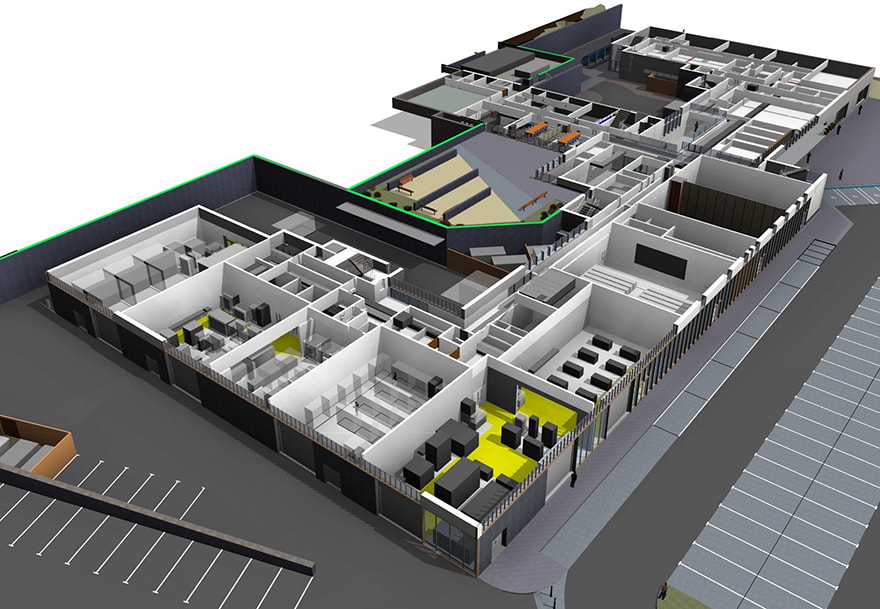- Client: Southern Regional College
- Lead Contractor: WYG Group
- BIM Tools: Revit, Infraworks, Viewpoint for Projects, Vico Office, Navisworks Manage & Solibri Model Checker, A
Consultant WYG Group has been working with Southern Regional College (SRC) on the development of three new college projects in Northern Ireland with a combined value of £95m.
BIM had to be implemented on the scheme as Level 2 is mandated on all projects in Northern Ireland that have a capital value of £4.1m or more (EU threshold), and both the client and WYG were keen to develop as much practical knowledge from the project as possible.
“Southern Regional Colleges teach BIM and they saw this as the perfect opportunity to develop real world teaching material,” says Peter Monaghan, the client’s BIM manager.
“We have been working with industry constantly over recent years to develop our knowledge of workflows within a BIM Level 2 environment,” continues Monaghan. “We are now exploring how we can unlock the full potential of the information the process delivers. Dashboards including data rich assets in real time will give the college the ability to utilise information more effectively in the future and lead to an improved learning environment for our students.”
The practical implementation of the mandate meant that all members of the SRC client team had access to fortnightly design reviews and model federations through the common data environment. This enables the team to review and comment upon models as part of the design iteration process, explains Henry Fenby-Taylor, BIM implementation manager at WYG Group.
“We have made it mandatory that every discipline, every consultant and every subcontractor uses the common data environment,” he says. “The final deliverables for each stage are all delivered online in this way so that everyone has to engage with the process in order to fulfil their duties.”

The SRC client team had access to fortnightly design reviews and model federations through the common data environment
Although Level 2 was mandated the team has not used the NBS BIM Toolkit or Uniclass 2015 on this project, a fact Fenby-Taylor puts down to the lack clarity surrounding what constitutes BIM level 2: “We have always intended that this would be an exemplar project because the client and WYG are both so determined to demonstrate their capabilities, but there was still some uncertainty about the use of Uniclass 2015 and the NBS Toolkit when we started this project.”
As well as a learning process for the college this scheme has also helped WYG take a step towards fully understanding how a BIM Level 2 project works in reality.
“We were not fully ready for BIM Level 2 when we started on this project but we did have a number of in house experts,” says Fenby-Taylor. “That has all changed now as a result of the Belfast team’s enthusiasm and hard work. Our project managers and the client also have been pivotal in delivering this change.”
Fenby-Taylor’s main takeaway from the project is that even in the digital world you cannot underestimate the benefits of physical connections.
“If I was to start the project again I would have created a shared physical space for the project and client team to work in,” he concludes. “Nothing beats face-to-face communication and the team being in the same space makes that readily available. This is something that we have since implemented on the Strule shared campus project.”











